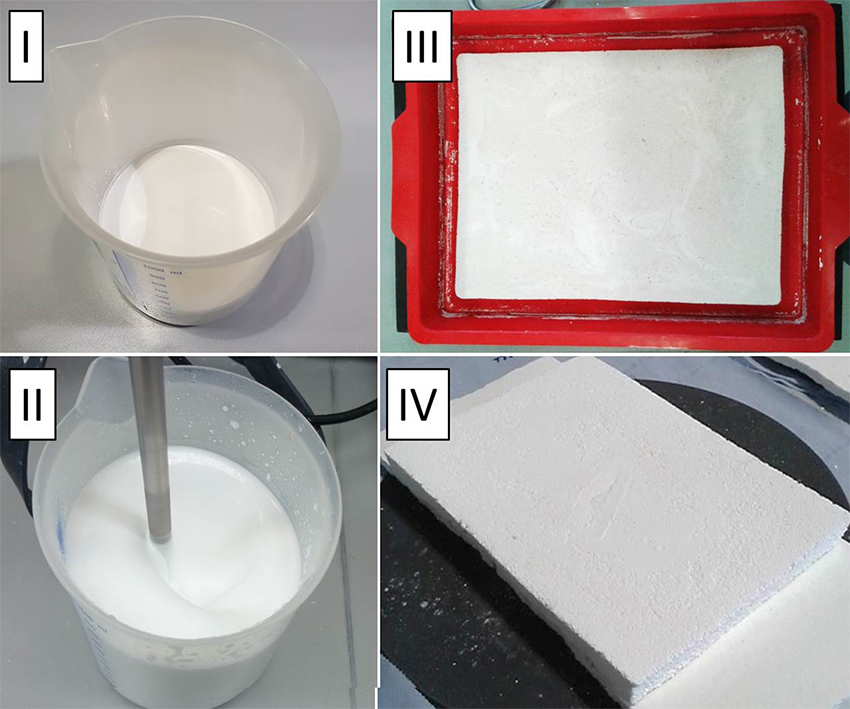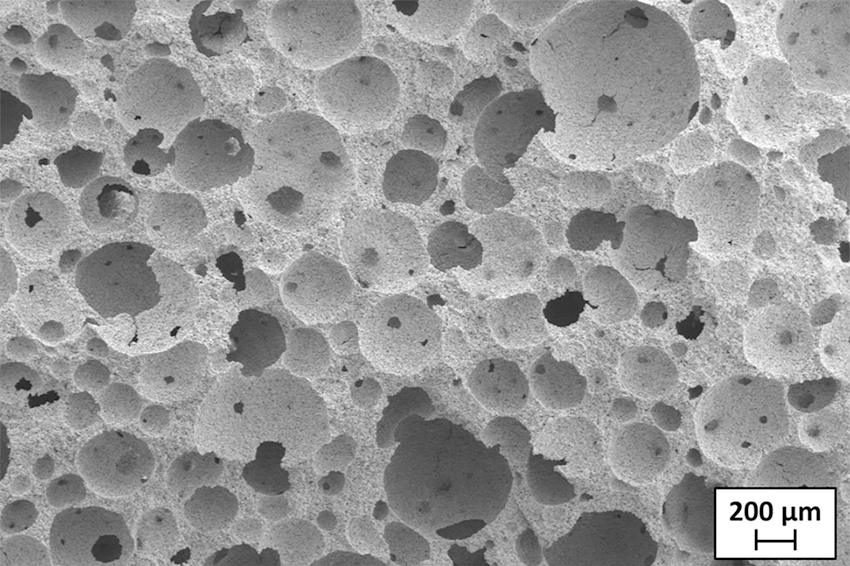Fraunhofer Center HTL develops inorganic and carbon-based foams for various applications. Compared to dense materials, foams are characterized by a high porosity, which typically exceeds 50 vol.-% and can be either open or closed. The high porosity and low density result in a unique property profile, which is characterized by:
- high specific surface area
- high permeability for fluids
- low thermal mass
- thermal and acoustic insulation properties
- high thermal cycling resistance
- high weight-specific strength and stiffness
At the same time, ceramic foams usually have high thermal and chemical resistance, as well as high hardness and abrasion resistance compared to fiber-based insulation materials. This qualifies inorganic foams for applications such as thermal and acoustic insulation components, filters, kiln furniture, lightweight construction or bone substitute materials.
 Fraunhofer ISC, Center for High Temperature Materials and Design HTL, Bayreuth
Fraunhofer ISC, Center for High Temperature Materials and Design HTL, Bayreuth

